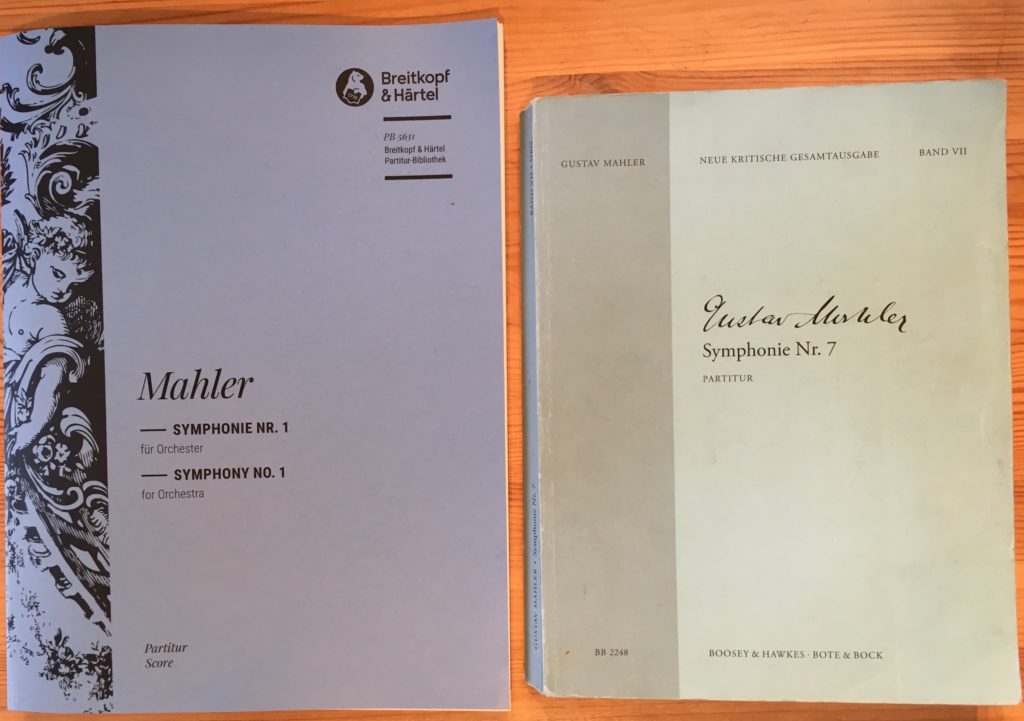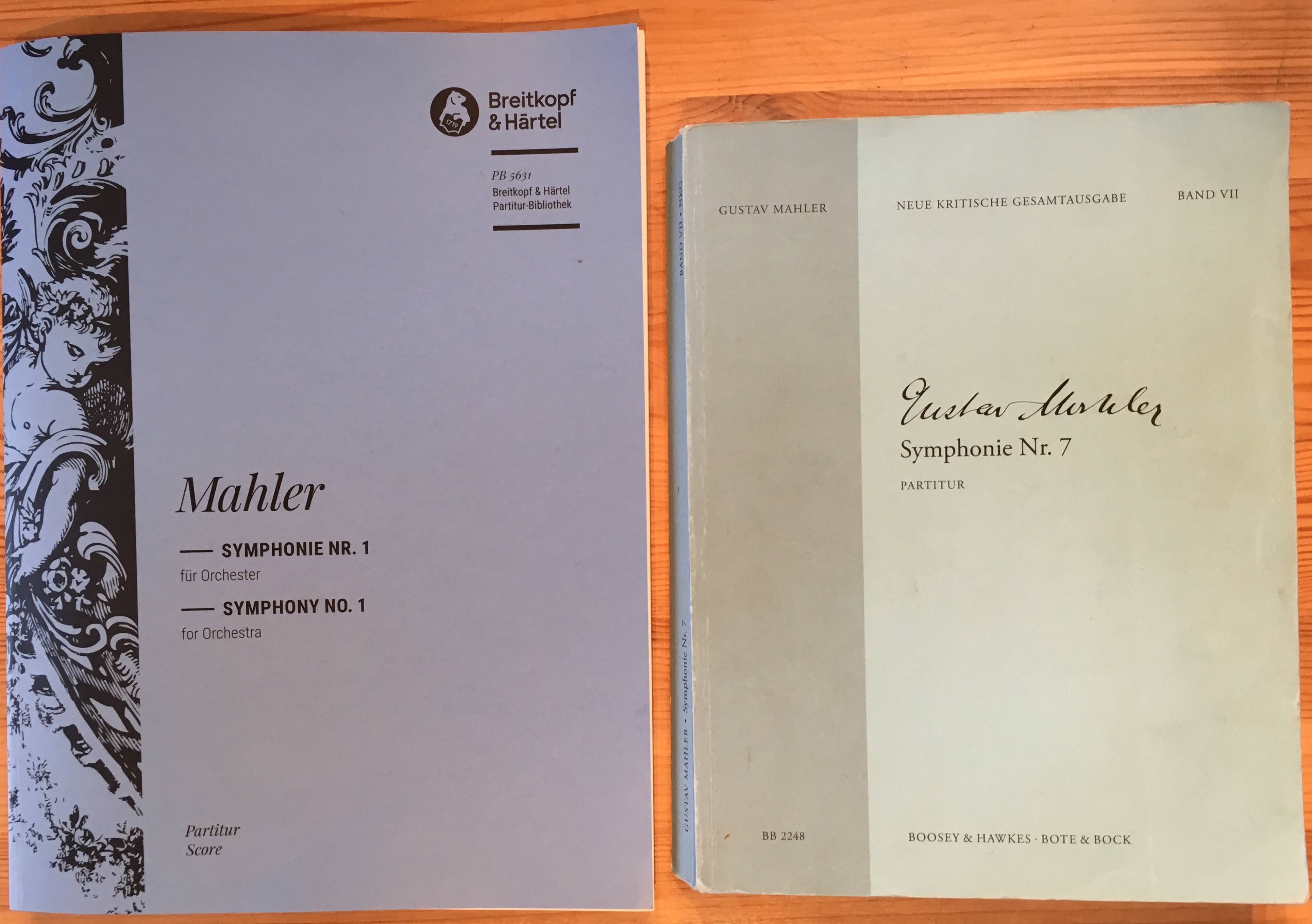On the 19th of May, Colorado MahlerFest will give the world premiere of the new Critical Edition of Mahler’s First Symphony being published by Breitkopf & Härtel.
It is the first attempt at a Critical Edition from outside the International Gustav Mahler Society in Vienna, and this development has spurred a certain amount of discussion and controversy. MahlerFest Artist Director Kenneth Woods explains why projects like this are central to the MahlerFest ethos.
Strange as it may sound, I was once asked to go on the BBC Radio 4 Today programme to debate the tempo of the third movement of Mahler’s Fifth Symphony with Sir Nicholas Kenyon. I can still remember the host, Evan Davis, sniggering that this was an entirely silly topic. Musical controversies are, by and large, tempests in teapots. Evan’s first question was simple – “Does any of this really matter?”
Nevertheless, there seems to be a proper musical controversy raging now regarding the publication of the new Critical Edition of the Mahler Symphonies Breitkopf & Härtel, which is being launched in celebration of the 300th Anniversary of the world’s oldest music publishing firm. It has been edited by Christian Rudolf Riedel with additional contributions from Constantin Floros.
The release of the first volume has been greeted with dismay by the publishers of the existing Critical Edition (Universal Edition) produced by the International Gustav Mahler Society (IGMG) in Vienna, who have posted a statement about the Breitkopf on their website which states in part:
“…the planned publication by Breitkopf & Härtel is not being undertaken with the cooperation with the IGMG and apparently does not meet the requirements of a modern scholarly, critical edition… [it] claims to be based on the “old” Gustav Mahler complete edition, which was produced by the IGMG beginning in the 1960s. This is now being replaced by the NKG, the New Critical Complete Edition, its creation spurred by the realization that the discovery of numerous new musical sources had left previous research outdated. On the other hand, the approach of the publisher Breitkopf & Härtel seems to be to reproduce the old complete edition using computer engraving, but apparently without systematic research using all of the now available source material.”
On the 19th of May, I will be conducting the world premiere of the new Breitkopf & Härtel edition at Colorado MahlerFest. Among MahlerFest’s many achievements, its most prized is the Gold Medal of the IGMG. We are one of only two American organisations to have received it (the other is Mahler’s own orchestra, the New York Philharmonic), and so it should be obvious that we enthusiastically support all the work of the IGMG, including their work on the NKG.
So, why court controversy by introducing this new edition? Our decision was based on a balance of the festival’s ethos and pragmatic considerations for our musicians and librarians.
Since its founding thirty-two years ago by my predecessor, Robert Olson, MahlerFest has always tried to be at the forefront of Mahler scholarship and performance. The festival took great pride in giving the world premiere of the Joseph Wheeler version of Mahler’s 10th Symphony in 1997, in preparation for which Robert Olson and a small international team of Mahler scholars spent over a year editing and preparing. This undertaking did not in any way represent a rejection of the better-known Cooke Performing Version. In fact, in 2017, we also gave the first performance of the Cooke to incorporate the latest revisions from Colin Matthews, David Matthews and Peter Wadl. No other North American organisation has performed as wide a range of Mahler’s music as we have. We have already done the existing IGMG version of the First and the five-movement Hamburg version; unveiling this new version is a logical next step for us.
As the IGMG statement notes, the new Breitkopf edition is based on the ‘old’ Complete Works edition. This is not, I think, a controversial approach. Most scholarly editions include a Critical Report (as does this one) which summarises the changes made from previous editions. So it is here. The preface to the new score notes that “Without fundamentally questioning the Complete Critical Edition… a large number of clarifications in the music text could be obtained, editorial inconsistencies rectified, and errors corrected that were discovered in the meantime.”
The IGMG’s first Critical Edition of Mahler 1 was edited by Erwin Ratz and published in 1967. A second edition followed from Sander Wilkens in 1992, corrected in 1995. I have always conducted Mahler 1 from the otherwise excellent Wilkens score, which is most famous for incorporating one of musicology’s worst all-time own goals: it wrongly asserting that the famous bass solo in the third movement was meant to be played by the whole section. The IGMG’s former editor in chief Rheinhold Kubik went so far as to say this “exposed the Critical Edition to ridicule from all Mahler researchers….”
In his Critical Report to the new Breitkopf edition, Riedel notes that “Ratz was able to rectify many errors in the music[al] text…. The editorial report printed there gives, though, hardly any information about the sources used and the editorial decisions… [and] that a whole range of sources had still not become known or had still not been examined at the time. It was only with his “improved edition” in 1992 that Sander Wilkens shed more light on the transmission of the sources….” The new Breitkopf edition is by no means a simple re-setting of the old Ratz edition, or for that matter, Wilkens, but is heavily indebted to the work of leading Mahler scholar, Paul Banks and his online works’ catalogue, The Music of Gustav Mahler: A Catalogue of Manuscript and Printed Sources, which, according to Riedel, “details source provenance, chronology and dependencies… The sources evaluation of the present edition is largely based on Paul Banks’ research findings”
So, what we have here is an attempt by Riedel and his team to produce an edition which incorporates the most comprehensive assessment and evaluation of all the extant sources which has been possible in the generation since the publication of Wilkens’ score. All that remains is to test their work in the laboratory of the concert hall. MahlerFest, which offers both a platform and scrutiny, is the perfect atmosphere in which to unveil a new edition, because we have a community of astute Mahlerians among our audience who will be scouring the Breitkopf for every new slur or removed accent… or mistake.
From a pragmatic point of view, the new edition has a lot going for it. The score and parts, which are elegantly typeset, are printed on sturdy paper in a large format and are easier to read than existing editions.

(Does size really matter? Depends on your eyesight)
Each part includes a fold-out with translations of all of Mahler’s German terminology. Perhaps most importantly, while the parts for both the Complete Works Edition and the NKG have always been available only for hire, the new Breitkopf parts are for sale. Preparing parts of a Mahler symphony for performance, including marking bowings, is a time-consuming and expensive process. Orchestras’ libraries of marked parts represent an important repository of institutional knowledge, and we find it hard to accept using rental parts of standard repertoire pieces, knowing that all the work putting into the parts in preparation for this year’s performance will be lost, and that next time we do the piece, we’ll have to hire another faceless, or possibly de-faced rental set (there is nothing more aggravating than paying $2000 to rent a piece and it showing up looking like it has lined an animal cage). In his preface, editor Riedel notes that his team were interested in “pursuing primarily practical matters.” In this respect, I think they have hit the ball out of the park.
I can understand the consternation of our colleagues at the IGMG, many of whom are long-time friends of MahlerFest and have spoken at our symposium. They take their role as guardians of Mahler’s legacy very seriously. For perspective, however, I note the hopeful case study of the publishing house long considered the guardians of Beethoven’s legacy, then displaced by a disrupter. For 150 years, there was only one definitive edition for the Beethoven symphonies. Then, in 1984, a young British musicologist and conductor named Jonathan Del Mar started work on a new edition that would challenge 150 years of tradition and precedent. Of course, the publishers who had guarded Beethoven’s symphonic legacy for so long were Breitkopf, the Beethoven establishment of yesteryear, now recast as today’s Mahlerian upstarts. Del Mar’s spurred a new generation of Beethoven recordings and fresh thinking about Beethoven’s music. Breitkopf had already begun work on their own new Urtext Edition of the Beethoven symphonies edited by Peter Hauschild and Clive Brown when Del Mar’s edition arrived, so the parallels to the Mahler situation is obvious. In the end, when there are complimentary scholarly editions available, performers and listeners can only benefit. The IGMG’s new edition of Mahler 1 is slated for release later this year, and I plan to buy a copy the day it comes out. Debate and discussion makes the world go round, we can all use more of it.
I’ve only had my Breitkopf score for a couple of weeks. In time, I expect many interesting discoveries, and I know that, with this being a first printing, we’ll find some very funny mistakes that have slipped through. What I hope, however, is that as the project unfolds, we can answer Evan Davis’ pithy question “Does any of this really matter?” in the affirmative.
- Kenneth Woods is the Artistic Director of Colorad MahlerFest and the English Symphony Orchestra
- mahlerfest.org
- kennethwoods.net

Recent Comments